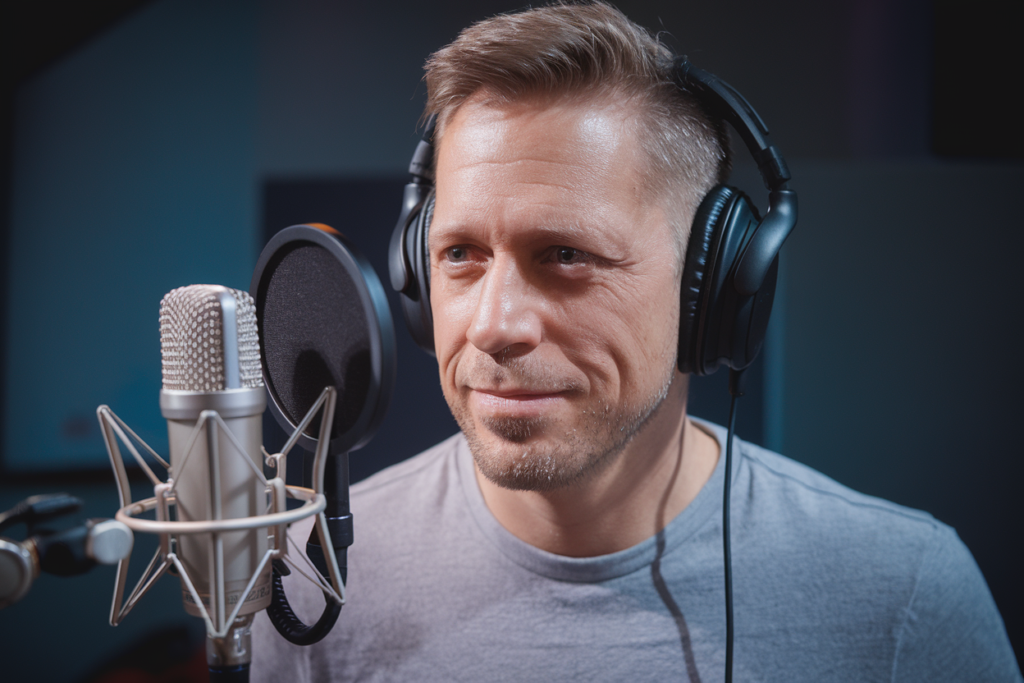Key Takeaways
- Vibrant Community: First language German speakers in Germany number over 76 million, significantly shaping the nation’s cultural landscape through their diverse dialects and traditions.
- Regional Dialects: Language varies greatly across regions, with distinct dialects such as Bavarian in the south and Low German in the north, enriching Germany’s linguistic diversity.
- Cultural Identity: Language is a core aspect of identity for native speakers, fostering a strong sense of belonging and pride tied to regional customs and expressions.
- Educational Emphasis: The German education system promotes proficiency in Standard German while also valuing regional dialects, ensuring students appreciate their linguistic heritage.
- Social Dynamics: First language speakers play key roles in community structures through local traditions and gatherings, though they face challenges from globalization that can impact dialect use.
- Bilingualism Trends: Many first language German speakers are bilingual or multilingual due to educational exposure to languages like English, enhancing cultural connections within diverse urban environments.
Ever wondered how first language German speakers in Germany navigate their daily lives? With over 76 million native speakers, understanding this vibrant community can unlock insights into the culture, education, and social dynamics of the country.
Overview of First Language German Speakers in Germany
First language German speakers in Germany form a vibrant and diverse community, encompassing over 76 million individuals. This group plays a crucial role in shaping the cultural landscape of the country. Each region brings its unique dialects, enriching the overall linguistic tapestry.
Daily interactions among first language speakers reflect their deep-rooted traditions and contemporary influences. In urban areas, you’ll encounter a mix of modern expressions intertwined with classic phrases, showcasing how language evolves while staying true to its roots. Education systems emphasize proficiency in Standard German while also acknowledging regional variations, which fosters an appreciation for local dialects.
Understanding this community opens doors to insights into Germany’s social dynamics. From family gatherings to professional settings, native speakers navigate various contexts effortlessly, using their language as a tool for connection and expression. Engaging with first language speakers can offer valuable perspectives on cultural nuances that shape everyday life in Germany.
Exploring the experiences of first language German speakers provides essential context for grasping Germany’s identity. Their voices resonate across different spheres, influencing art, literature, and communication styles throughout the nation.
Demographics of First Language German Speakers
First language German speakers form a significant part of the population in Germany, with over 76 million individuals communicating predominantly in this language. Understanding the demographics associated with these speakers sheds light on their cultural significance and societal roles.
Regional Distributions
German is spoken across various regions, each exhibiting unique dialects and variations. The southern regions, like Bavaria and Baden-Württemberg, feature distinct Bavarian and Swabian dialects. Northern areas such as Schleswig-Holstein predominantly speak Low German. Central Germany showcases a mix of dialects including Hessian and Thuringian. Urban centers like Berlin or Hamburg often blend these regional nuances due to diverse populations, creating a dynamic linguistic landscape that reflects both tradition and modernity.
Age and Gender Breakdown
The demographic profile of first language German speakers includes balanced age groups, though younger generations demonstrate increased exposure to global languages through education. Children engage with Standard German while also learning English or other foreign languages from an early age. Gender distribution remains relatively equal among native speakers; however, specific professions may show slight variances in representation. For instance, creative fields such as arts or media might attract more female voices, while technical sectors could lean towards male speakers.
Understanding these demographics provides valuable insights into the everyday lives of first language German speakers in Germany, revealing how they communicate within their communities and influence broader cultural narratives.
Cultural Impact of First Language German Speakers
First language German speakers play a vital role in shaping Germany’s cultural landscape. Their rich linguistic heritage and diverse regional dialects contribute significantly to the nation’s identity.
Language and Identity
Language serves as a core aspect of identity for first language German speakers. It influences how individuals perceive themselves and their connection to their communities. Regional dialects enhance this sense of belonging, allowing speakers to express unique cultural nuances. For instance, a Bavarian speaker might use specific phrases that reflect local customs, while someone from Hamburg may incorporate maritime expressions into everyday conversation. This linguistic diversity fosters pride among speakers and helps preserve traditions through generations.
Literature and Arts Contributions
First language German speakers significantly enrich Germany’s literature and arts scene. The vast array of dialects fuels creativity among writers, poets, and artists who draw inspiration from their linguistic roots. Renowned works often showcase regional variations, highlighting distinct cultural perspectives. Additionally, contemporary voice talent plays an essential role in bringing these literary creations to life through audio formats like audiobooks or performances. Voice actors infuse characters with authenticity by utilizing the appropriate dialects, deepening listeners’ connections to the material. This interplay between language and art not only preserves but also celebrates the vibrancy of Germany’s cultural heritage across various mediums.
Education and Language Proficiency
Education plays a crucial role in shaping language proficiency among first language German speakers. The German education system emphasizes Standard German, ensuring that students across the country develop strong foundational skills. Schools incorporate regional dialects into their curriculum, which helps maintain linguistic diversity while fostering respect for local traditions.
Educational Policies
Educational policies in Germany promote inclusivity and accessibility to quality language education. Curricula are designed to enhance both spoken and written communication skills, with a focus on literature, grammar, and cultural studies. This approach not only improves fluency in Standard German but also enriches students’ understanding of various dialects. Teachers often encourage students to engage with regional expressions during lessons, creating an environment where local dialects are appreciated rather than dismissed.
Bilingualism and Multilingualism
Bilingualism is common among first language German speakers as many individuals learn additional languages during their schooling. English holds significant importance alongside other European languages like French or Spanish. Exposure to multiple languages enhances cognitive abilities and cultural awareness while allowing individuals to connect with diverse communities.
Moreover, multilingual environments flourish in urban centers such as Berlin and Hamburg, where people from various backgrounds interact daily. This dynamic fosters rich conversations filled with unique phrases from different languages, contributing to the vibrant tapestry of communication styles within these regions.
Language proficiency among first language German speakers reflects their educational experiences while highlighting the importance of preserving regional dialects amidst globalization trends. Understanding these aspects can provide valuable insights into how this community continues influencing Germany’s broader cultural landscape.
Social Dynamics and Integration
First language German speakers play a vital role in Germany’s social dynamics and integration. Their interactions reflect rich cultural backgrounds, contributing to the vibrant community landscape. Understanding these dynamics unveils how they navigate relationships within their neighborhoods and workplaces.
Community Structures
Community structures among first language German speakers often center around local customs, traditions, and dialects. Neighborhood gatherings, festivals, and regional events strengthen connections. For example, Oktoberfest in Bavaria showcases not only the Bavarian dialect but also fosters communal pride through shared experiences. Schools frequently serve as hubs for families, promoting engagement through activities like parent-teacher associations or cultural clubs. These platforms allow for collaboration while preserving local identities.
Challenges Faced by First Language German Speakers
Despite their strong community presence, first language German speakers encounter challenges. The increasing globalization of culture sometimes dilutes regional dialects as Standard German gains prominence in media and education. Additionally, urban migration can create linguistic shifts that affect traditional expressions within communities. Some individuals may struggle with balancing their native dialect with the need to communicate effectively in Standard German at work or school environments.
In some instances, generational gaps arise where younger members might prefer modern vernacular over established phrases from their heritage. This shift can lead to concerns about losing unique cultural nuances over time.
By recognizing these challenges alongside the strengths of first language German speakers’ networks, you gain insight into how they adapt while striving to maintain their linguistic heritage amidst evolving societal landscapes.
Conclusion
Understanding first language German speakers in Germany opens a window into the country’s rich cultural tapestry. Their unique dialects and traditions play a vital role in shaping regional identities and fostering community connections. As you explore this vibrant linguistic landscape, you’ll appreciate how these speakers contribute to art, literature, and social dynamics across the nation.
While challenges like globalization threaten to dilute regional nuances, the resilience of this community shines through. Their commitment to preserving dialects while embracing modern expressions ensures that Germany’s diverse heritage continues to thrive. Engaging with first language German speakers not only enriches your perspective but also deepens your appreciation for the complexities of communication within this dynamic society.
Frequently Asked Questions
What is the significance of first language German speakers in Germany?
First language German speakers, numbering over 76 million, play a crucial role in shaping Germany’s culture and social dynamics. Their experiences offer insights into regional traditions and modern influences, enriching the country’s identity.
How do dialects influence communication among German speakers?
Dialects are vital to communication among German speakers, reflecting local customs and fostering community pride. Variations like those found in Bavaria or Hamburg showcase the rich linguistic diversity across regions.
What role does education play in maintaining linguistic diversity?
The German education system emphasizes Standard German while incorporating regional dialects. This approach promotes respect for local traditions and enhances communication skills through literature and cultural studies.
How do first language German speakers contribute to arts and literature?
First language German speakers significantly impact Germany’s arts scene by inspiring creativity among writers and artists. Regional dialects enrich literary works, offering unique perspectives that celebrate cultural heritage.
What challenges do first language German speakers face today?
Challenges include the dilution of regional dialects due to globalization and urban migration affecting traditional expressions. Younger generations may favor modern vernacular, raising concerns about preserving linguistic heritage.







